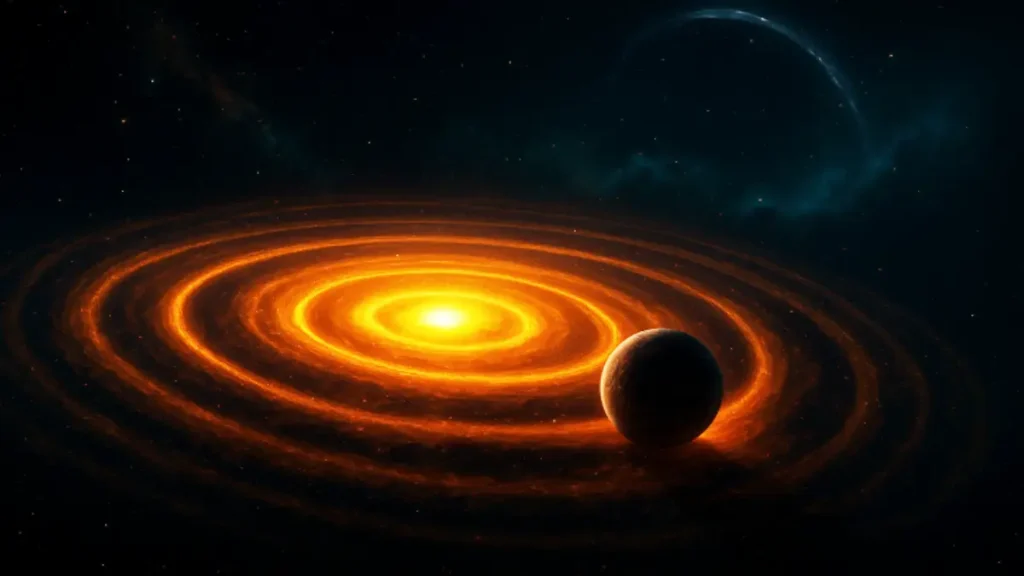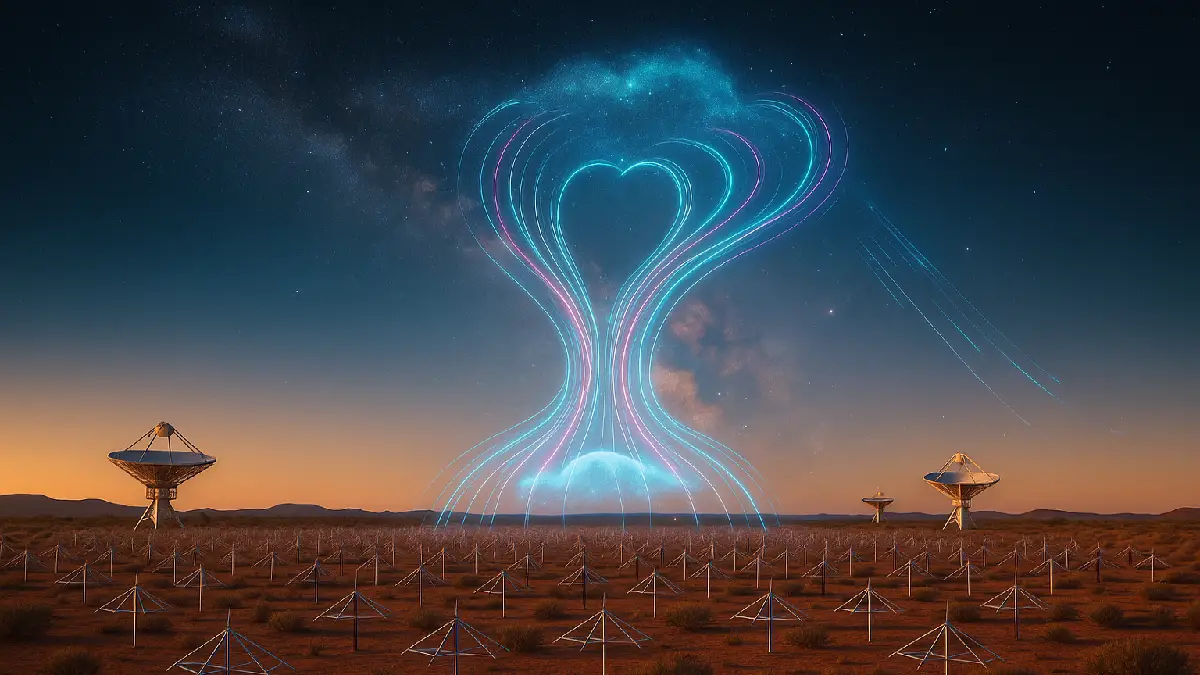The James Webb Space Telescope isn’t just taking prettier pictures—it’s changing the priors behind two of astronomy’s hardest questions: what kinds of planets the universe prefers to build, and how the unseen scaffolding of dark matter actually shapes galaxies and stars. Recent Webb results reveal carbon-rich planet-forming environments and exoplanets with robust CO₂ signatures while simultaneously sharpening methods to map dark matter through gravitational lensing and cluster mass reconstructions. Together, they point to a rebalanced cosmic recipe: carbon chemistry is more varied than expected, and dark matter cartography is moving from inference to practical mapping.

Carbon-Rich Planets Enter the Mainstream
- Webb has directly imaged young giant exoplanets in HR 8799 and detected strong atmospheric CO₂ features, bolstering core accretion formation scenarios and demonstrating chemical retrieval via imaging—not just transit spectroscopy. This confirms heavier-element enrichment in their atmospheres and a path to routine atmospheric chemistry from direct images.
- In parallel, Webb identified a planet-forming disk unusually rich in carbon dioxide and strikingly poor in water in NGC 6357, upending assumptions that inner disks are water-dominated and hinting that ultraviolet radiation fields can rewrite inner-disk chemistry. This introduces the plausibility of carbon-rich rocky worlds forming in harsh star-forming environments.
- Webb also found the richest menu of carbon-bearing molecules around a very low-mass star’s disk, suggesting these systems can seed terrestrial planets with markedly carbon-skewed gas compositions compared to solar-type disks, with implications that resulting planets might be carbon-poor solids despite carbon-rich gas.
The Supply Chain of Carbon in Space
- Wolf-Rayet binaries like WR 140 manufacture carbon-rich dust shells that expand and can seed star-forming regions, offering a tangible source term for the carbon inventory later seen in disks and exoplanet atmospheres. Webb has resolved multiple shells, visualizing a pipeline from stellar winds to interstellar carbon grains.
- Webb’s observatory-class sensitivity in the mid-infrared enables isotopologue and complex hydrocarbon detections in disks, turning “carbon availability” from a guess into a measurable input for planet formation models, and linking meteoritic isotopic fingerprints to present-day disk chemistry across environments.
How Carbon-Rich Chemistry Reshapes Planet Expectations
- If intense UV environments suppress water and elevate CO₂ in the inner disk, then rocky planets forming there may inherit different oxidation states, volatile budgets, and interior mineralogies—potentially influencing tectonics, outgassing, and surface conditions. This reframes habitability modeling beyond “Earth-like” defaults.
- For low-mass stars, Webb’s findings imply a distinct class of inner disks with carbon-dominant gas; the solids that build planets might be comparatively carbon-poor, shifting the tradeoff between atmospheric versus interior carbon and, by extension, the likelihood of secondary atmospheres and organic inventories.
Mapping the Invisible: Webb’s Role in Dark Matter Cartography
- High-resolution infrared imaging improves strong-lensing models of galaxy clusters by revealing more multiply imaged arcs at redder wavelengths, refining mass distributions and substructure constraints that underpin dark matter maps. Webb’s sensitivity pushes lensing source counts higher, tightening reconstructions.
- By anchoring mass models with precise photometry and redshifts of lensed background galaxies, Webb helps break degeneracies that have limited lens mass maps, aiding comparisons to cold dark matter predictions for subhalo abundance and distribution. This moves the field closer to “practical maps” of dark matter at cluster and galaxy scales.
- The planetary and dark matter threads connect: lensing-derived mass maps quantify where baryons settle within dark matter scaffolds, which governs star-formation conditions and, ultimately, the UV environments and carbon processing that Webb now sees in disks—closing a loop from cosmology to mineralogy.
Instrument-to-Insight Pipeline
- Imaging plus spectroscopy is the critical pairing: Webb’s coronagraphic imaging of HR 8799 provided CO₂ detections by direct light, complementing transit results like WASP-39 b and broadening atmospheric chemistry access to non-transiting systems, a leap for demographics.
- MIRI’s spectral resolution resolves complex organics and isotopologues in disks that previous space telescopes missed, turning mid-IR spectroscopy into a forensic lab for disk chemistry under different radiation environments.
- On the gravitational side, the same angular resolution and sensitivity that pick out faint disk lines also recover faint lensed sources near critical curves, which are essential for precise mass models in cluster cores and galaxy-scale lenses.
Second-Order Effects Across the Ecosystem
- Exoplanet formation theory: Core accretion gains direct chemical support from CO₂-rich giants, while disk chemistry diversity forces population synthesis models to include environment-dependent volatile partitioning and UV processing.
- Origin-of-life pathways: If many inner disks are water-poor yet carbon-featured, prebiotic chemistry may hinge more on delivery mechanisms (e.g., late veneers, cometary input) and atmospheric processing than once thought, diversifying paths to habitability.
- Cosmology feedback: Better dark matter maps refine baryonic physics prescriptions in galaxy simulations, which then predict star formation rates, metallicity evolution, and radiation fields—inputs that set the chemical stage Webb now measures in planet nurseries.
What If This Is the Norm?
- If carbon-skewed inner disks are common in massive star-forming regions, then “Earth-like” chemistries could be a local special case, not a universal template—altering expectations for biosignature false positives and the prevalence of secondary atmospheres.
- If direct-imaging chemistry keeps scaling, the community will move from showcase systems to statistically robust atmospheric catalogs, unlocking cross-correlations with host metallicity, formation environment, and migration history.
- If lensing maps continue sharpening, the small-scale structure of dark matter—subhalos and their mass function—can test alternatives to cold dark matter, feeding back into galaxy assembly histories that set the boundary conditions for disk chemistry.
The Throughline: Measuring the Recipe and the Mold
Webb is measuring the cosmic recipe (how much carbon, oxygen, and complex molecules are available and where) and the mold (the dark matter structures that funnel gas and shape radiation fields). Carbon-rich planet findings give ground truth on ingredients; dark matter mapping refines the mold that bakes planetary systems at scale. It’s a system-of-systems upgrade to planet formation and cosmology—less about a single headline, more about unifying the assembly line from invisible scaffolding to the chemistry of worlds.




